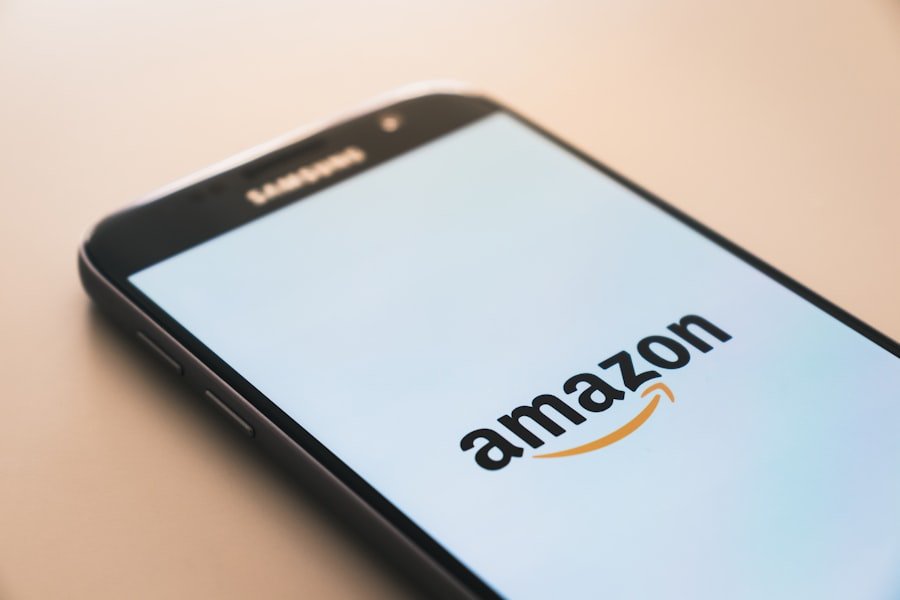How to start a 6 figure Amazon Dropshipping business in 2024

Amazon dropshipping is a business model where sellers list products on Amazon and fulfill orders by purchasing those products from a third-party supplier who then ships the items directly to the customer. This means that as a dropshipper, you don’t need to hold any inventory or worry about shipping and fulfillment. It’s a popular business model because it allows entrepreneurs to start an online business with minimal upfront costs and without the need for a physical store.
One of the main benefits of Amazon dropshipping is the low barrier to entry. You don’t need to invest in inventory upfront, which means you can start your business with limited capital. Additionally, you don’t have to worry about storing and managing inventory, as the supplier takes care of that for you. This allows you to focus on other aspects of your business, such as marketing and customer service.
However, there are some common misconceptions about Amazon dropshipping that need to be addressed. One misconception is that it’s a get-rich-quick scheme. While dropshipping can be a profitable business model, it requires hard work, research, and dedication. Another misconception is that it’s easy to find profitable products to sell. In reality, finding profitable niches and products requires thorough market research and analysis.
Key Takeaways
- Amazon dropshipping involves selling products on Amazon without holding inventory
- Research profitable niches and products to sell on Amazon
- Set up an Amazon seller account and storefront to start selling
- Find reliable suppliers and negotiate deals to ensure profitability
- Create an effective marketing plan to increase sales and visibility
Researching Profitable Niches and Products
Before you start your Amazon dropshipping business, it’s important to identify profitable niches and products to sell. This involves conducting market research and analyzing competition.
To identify profitable niches, start by brainstorming ideas based on your interests, hobbies, or areas of expertise. Look for niches that have a high demand but low competition. You can use tools like Google Trends or Amazon’s Best Sellers list to get an idea of what products are currently popular.
Once you have identified potential niches, conduct market research to validate their profitability. Look for trends in the market, such as increasing demand or a lack of competition. You can also use tools like Jungle Scout or Helium 10 to analyze sales data and estimate the potential profitability of a niche.
Analyzing competition is also crucial in determining the viability of a niche. Look at the top sellers in your chosen niche and analyze their product listings, pricing, and customer reviews. This will give you insights into what is currently working in the market and help you identify opportunities for differentiation.
Once you have identified a profitable niche, it’s time to find products to sell. Look for products that have a high demand but low competition. You can use tools like Alibaba or AliExpress to find suppliers who offer the products you are interested in selling. Make sure to evaluate the supplier’s reliability and reputation before making any deals.
Setting Up Your Amazon Seller Account and Storefront
To start selling on Amazon, you need to create an Amazon seller account. This involves providing basic information about your business, such as your business name, address, and contact information. You will also need to choose a selling plan, either an individual plan or a professional plan.
Once you have set up your seller account, it’s time to create your storefront. Your storefront is where customers will browse and purchase your products. It’s important to optimize your storefront for conversions by creating compelling product listings, using high-quality images, and providing detailed product descriptions.
When setting up your storefront, it’s important to understand Amazon’s policies and guidelines. Familiarize yourself with their rules regarding product listings, pricing, and customer service. Violating these policies can result in penalties or even suspension of your seller account.
Finding Reliable Suppliers and Negotiating Deals
Finding reliable suppliers is crucial for the success of your Amazon dropshipping business. Look for suppliers who offer high-quality products, competitive prices, and reliable shipping services. You can use platforms like Alibaba or AliExpress to find suppliers, but make sure to thoroughly evaluate their performance before making any deals.
When evaluating suppliers, look for reviews and ratings from other sellers. This will give you insights into their reliability and customer service. You can also request samples of their products to ensure their quality meets your standards.
Once you have identified a reliable supplier, it’s time to negotiate a deal. Negotiating with suppliers can help you secure better prices and terms. Be prepared to negotiate on factors such as pricing, minimum order quantities, and shipping terms. Building a long-term relationship with your supplier is also important, as it can lead to better deals and improved customer service.
Creating an Effective Marketing Plan for Your Products
Marketing is crucial for the success of your Amazon dropshipping business. There are several strategies you can use to promote your products and drive sales.
One of the most effective marketing strategies on Amazon is utilizing their advertising options. Amazon offers various advertising options, such as Sponsored Products, Sponsored Brands, and Sponsored Display. These advertising options allow you to promote your products to a targeted audience and increase visibility.
Creating effective product listings is also important for driving sales. Optimize your product titles, descriptions, and keywords to improve your search rankings and attract more customers. Use high-quality images and provide detailed product information to help customers make informed purchasing decisions.
In addition to Amazon advertising, you can also utilize social media and other marketing channels to promote your products. Create social media accounts for your business and engage with your audience through regular posts and promotions. You can also collaborate with influencers or run targeted ads on platforms like Facebook or Instagram.
Building a brand and creating customer loyalty is another important aspect of your marketing plan. Provide excellent customer service, respond promptly to customer inquiries, and handle returns and refunds professionally. Encourage customers to leave reviews and ratings for your products, as positive reviews can significantly impact sales.
Managing Inventory and Fulfillment Processes

Managing inventory is crucial for the success of your Amazon dropshipping business. You need to ensure that you have enough stock to fulfill customer orders, but not too much that it ties up your capital or leads to excess inventory.
Understanding Amazon’s fulfillment options is important for managing inventory. Amazon offers two main fulfillment options: Fulfilled by Amazon (FBA) and Fulfilled by Merchant (FBM). FBA allows you to store your inventory in Amazon’s warehouses and have them handle the shipping and customer service. FBM means you handle the shipping and customer service yourself.
Automating fulfillment processes can help streamline your operations and save time. Use tools like inventory management software or order management systems to automate tasks such as order processing, inventory tracking, and shipping notifications.
Dealing with out-of-stock situations is also important for maintaining customer satisfaction. Monitor your inventory levels regularly and reorder products in a timely manner to avoid running out of stock. If an item does go out of stock, communicate with your customers and provide updates on when the item will be available again.
Handling Customer Service and Returns
Providing excellent customer service is crucial for building a positive reputation on Amazon. Respond promptly to customer inquiries and address any issues or concerns they may have. Be professional and courteous in all interactions with customers.
Handling returns and refunds is also an important aspect of customer service. Make sure to clearly communicate your return policy to customers and provide instructions on how to initiate a return. Process returns promptly and issue refunds in a timely manner.
Dealing with negative feedback and reviews can be challenging, but it’s important to handle them professionally. Respond to negative feedback or reviews calmly and offer solutions to address the customer’s concerns. Use negative feedback as an opportunity to improve your products or customer service.
Building a positive reputation on Amazon is crucial for the success of your business. Encourage satisfied customers to leave reviews and ratings for your products, as positive reviews can significantly impact sales. Respond to all customer feedback, whether positive or negative, to show that you value your customers’ opinions.
Optimizing Your Amazon SEO and Product Listings
Optimizing your Amazon SEO is crucial for improving your search rankings and driving more traffic to your product listings. Understanding Amazon’s search algorithm is key to optimizing your product listings.
Optimize your product titles, descriptions, and keywords to include relevant keywords that customers are likely to search for. Use tools like Amazon’s Keyword Tool or third-party keyword research tools to identify high-volume keywords with low competition.
Utilize Amazon’s Enhanced Brand Content (EBC) to enhance your product listings. EBC allows you to add additional images, videos, and detailed product descriptions to your listings. This can help improve conversion rates and provide customers with more information about your products.
Improving your product reviews and ratings is also important for optimizing your Amazon SEO. Encourage satisfied customers to leave reviews and ratings for your products by sending follow-up emails or offering incentives. Respond to all customer feedback, whether positive or negative, to show that you value your customers’ opinions.
Scaling Your Business and Expanding Your Product Line
Once you have established a successful Amazon dropshipping business, it’s time to scale and expand. Identify opportunities for growth by analyzing market trends and customer demand. Look for new niches or product categories that align with your existing business.
Expanding your product line can help attract new customers and increase sales. Look for complementary products that are related to your existing offerings. This can help you cross-sell or upsell to existing customers and increase their lifetime value.
Outsourcing tasks and hiring employees can help free up time for growth. Identify tasks that can be outsourced, such as customer service or order fulfillment, and hire employees or freelancers to handle those tasks. This will allow you to focus on strategic aspects of your business, such as marketing and product development.
Building a sustainable business model is crucial for long-term success. Continuously monitor your financials and make adjustments as needed. Look for ways to increase efficiency and reduce costs. Invest in technology or automation tools that can help streamline your operations.
Staying Ahead of the Competition and Adapting to Changes in the Marketplace
In the fast-paced world of e-commerce, it’s important to stay ahead of the competition and adapt to changes in the marketplace. Keep up with industry trends and changes by attending conferences, reading industry publications, and networking with other sellers.
Monitor your competition regularly and adjust your strategies accordingly. Analyze their product listings, pricing, and marketing tactics to identify areas where you can differentiate or improve. Look for opportunities to innovate and stay ahead of the curve.
Adapting to changes in Amazon’s policies and guidelines is also important for the success of your business. Stay informed about any updates or changes in Amazon’s policies and make adjustments as needed. This includes staying compliant with their rules regarding product listings, pricing, and customer service.
Anecdotes:
1. Personal experience with finding a profitable niche and product:
When I first started my Amazon dropshipping business, I spent a lot of time researching different niches and products. I wanted to find a niche that had high demand but low competition. After conducting thorough market research, I identified a niche in the pet accessories category that seemed promising. I found that there was a growing trend of pet owners looking for unique and stylish accessories for their pets. I decided to focus on dog bandanas, as they were relatively inexpensive to source and had a high profit margin. I started by listing a few different designs on Amazon and was pleasantly surprised by how quickly they sold out. This experience taught me the importance of thorough market research and validated my decision to focus on this niche.
2. Negotiating a deal with a supplier and building a long-term relationship:
When I first started my Amazon dropshipping business, I was sourcing products from a supplier on Alibaba. The initial pricing they offered was quite high, so I decided to negotiate a better deal. I reached out to the supplier and explained that I was a new seller and looking to establish a long-term relationship. I emphasized that I would be placing regular orders and asked if they could offer a better price. After some back and forth, we were able to agree on a lower price per unit. This negotiation not only helped me secure better pricing but also established a foundation for a long-term relationship with the supplier. Over time, as my business grew, I was able to negotiate even better deals and receive priority treatment from the supplier.
3. Dealing with a difficult customer service situation and turning it into a positive experience:
Customer service is an important aspect of any business, and it’s no different for an Amazon dropshipping business. One time, I had a customer who received a damaged product and was very upset. They left a negative review on my product listing and contacted me directly to express their dissatisfaction. Instead of getting defensive or ignoring the issue, I immediately reached out to the customer to apologize for the inconvenience and offer a solution. I offered to send them a replacement product free of charge and provided them with a prepaid return label to send back the damaged item. The customer was pleasantly surprised by my quick response and willingness to resolve the issue. They updated their review to reflect the positive resolution and even became one of my loyal customers. This experience taught me the importance of addressing customer concerns promptly and professionally.
4. Scaling a business and outsourcing tasks to free up time for growth:
As my Amazon dropshipping business started to grow, I quickly realized that I couldn’t handle everything on my own. I was spending too much time on tasks like customer service and order fulfillment, which left little time for strategic planning and business development. I decided to hire a virtual assistant to help with customer service inquiries and a fulfillment center to handle order processing and shipping. This allowed me to focus on scaling my business and expanding my product line. By outsourcing these tasks, I was able to free up time for growth and focus on strategic aspects of my business. It was a game-changer for my business and allowed me to take it to the next level.
If you’re interested in starting a 6 figure Amazon Dropshipping business in 2024, you’ll definitely want to check out this informative article on howtostart.digital. In their post titled “Hello World,” they provide valuable insights and tips on getting started in the world of dropshipping. From finding profitable products to optimizing your listings, this article covers it all. Don’t miss out on this opportunity to learn from the experts and take your business to new heights. Read more
FAQs
What is Amazon Dropshipping?
Amazon Dropshipping is a business model where a seller lists products on Amazon without actually holding inventory. When a customer places an order, the seller purchases the product from a third-party supplier and has it shipped directly to the customer.
What is a 6 figure Amazon Dropshipping business?
A 6 figure Amazon Dropshipping business is a business that generates over $100,000 in revenue per year.
What are the benefits of starting an Amazon Dropshipping business?
The benefits of starting an Amazon Dropshipping business include low startup costs, the ability to work from anywhere, and the potential for high profits.
What are the steps to starting a 6 figure Amazon Dropshipping business?
The steps to starting a 6 figure Amazon Dropshipping business include researching profitable products, finding reliable suppliers, creating a seller account on Amazon, optimizing product listings, and marketing the products.
What are some common mistakes to avoid when starting an Amazon Dropshipping business?
Common mistakes to avoid when starting an Amazon Dropshipping business include choosing the wrong products, working with unreliable suppliers, not optimizing product listings, and not properly managing inventory.
What are some tips for success in an Amazon Dropshipping business?
Tips for success in an Amazon Dropshipping business include choosing profitable products, building relationships with reliable suppliers, optimizing product listings for search, providing excellent customer service, and continually testing and improving the business.




